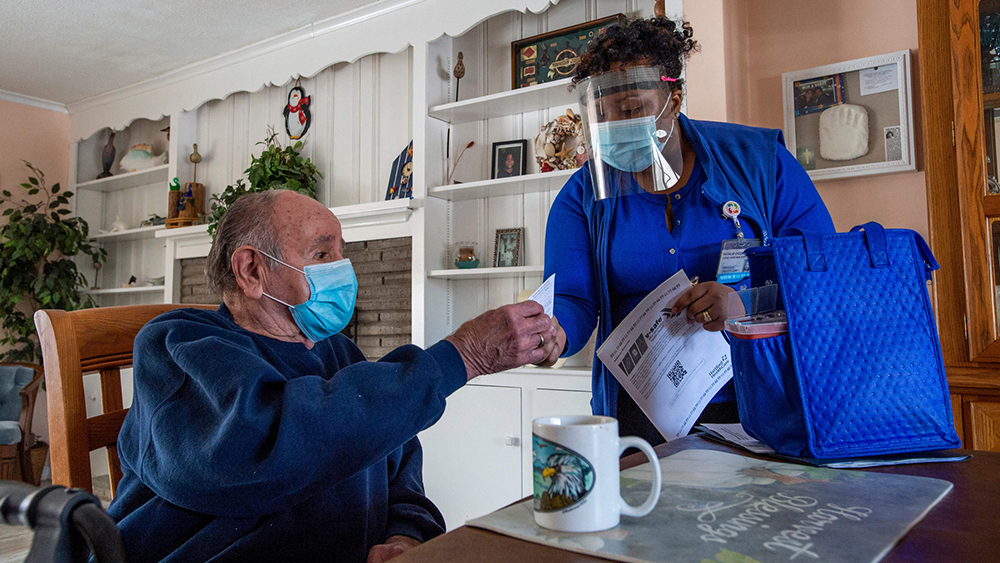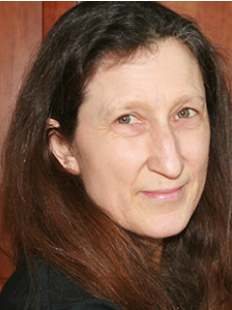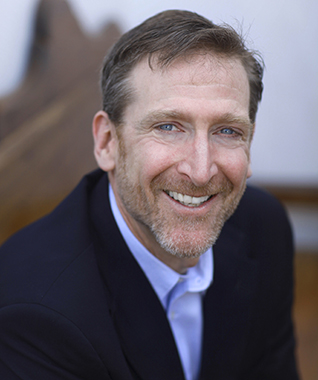
By Karen Shih
The current U.S. health care system often resembles a game of whack-a-mole. A health issue pops up, a patient goes to their doctor, and the doctor deals with that problem – over and over and over again, across the country. Doctors, incentivized by insurance plans that pay per visit or per service, treat issues as they arise, rather than taking a more proactive, holistic approach to the patient’s overall health.
The weakness of the current system can be seen in the fact that the U.S. has the worst life expectancy of any high-income country, despite ballooning health care costs. Family premiums for employer-sponsored health coverage now exceed $20,000 a year and the Medicare trust fund is projected to be bankrupt by 2024.
“Health care spending is unsustainable,” says Robert Mechanic, senior fellow at the Institute on Healthcare Systems (IHS). “Still, it’s going up and up and up and it doesn’t seem to stop.”
That’s why he and IHS Director Jennifer Perloff, PhD’06, are examining new models of health care payment and delivery that focus on population health, rather than the fee-for-service systems. In this conversation, they explore the potential for Accountable Care Organizations (ACOs) – which incentivize providers to focus on overall patient outcomes rather than frequency of visits – to provide higher-quality care and reduce costs.
What is population health, and how does it relate to accountable care organizations?
Jennifer Perloff: Population health is a broad concept, basically saying that healthcare providers are taking on responsibility for the care of a group of patients, managing a whole population. Accountable Care Organizations (ACOs) are actually only one type of population health model, but they are the go-to model for our studies because there is a lot of data on them. ACOs are relatively new and experimental, but they have grown quickly and currently cover about a third of Medicare beneficiaries and a much smaller portion of privately-insured individuals, though we believe the number will grow in the coming years.
Population health models are really exciting. Instead of saying, “It’s me and my doctor and individual decisions,” a group of clinicians are thinking about a whole group of patients. How do we optimize care for a broad set of people?
We’re in the midst of this major transformation both in terms of how we pay for health care and how we deliver health care. We’re moving away from fee-for-service, item-by-item, to a value-based system. This holistic approach, based on prevention and equity, is going to build a stronger, better system that’s more efficient.
Robert Mechanic: The medical system has traditionally been a sick care system, not a health care system. But one of the differences with population health models is they’re proactive in helping patients manage chronic disease, so fewer patients go to the hospital. That’s good for the patient and saves money because hospitals are the most expensive place to be. But there’s an inherent tension in the system because a lot of the big health care institutions are built around keeping hospital beds full. Population health is trying to shift that mindset. We want health system success to be having their hospital beds empty.
What are some of the benefits of ACOs?
JP: ACOs can help address social determinants of health and disparities in health care access and outcomes. What some ACOs are doing to keep patients out of the hospital is thinking about their food needs, living situations and health conditions. They use data and analytics to proactively screen high-risk patients to figure out which ones have issues impeding their health and are more likely to have acute events, like a heart attack or stroke. They’ll make sure, for example, people are taking their medications correctly. Leading-edge ACOs partner with community-based organizations for additional support.
RM: A big emphasis of ACOs is restructuring primary care from individual- to team-based care. A physician may work with a team including a nurse practitioner, medical assistant, social worker and medical receptionist. Each person on the team is working at the top of their license. The doctor focuses on doing complex diagnostic work, while the nurse may do health coaching like diabetes education, and the receptionist proactively calls chronically ill patients to make sure they get the right preventive services.
Some ACOs are now investing in home-based primary care, which helps reach patients who have trouble getting to the office because they have mobility or transportation problems. When a physician sees a patient in their home environment, they learn things about them they probably wouldn’t catch in the office. Do they have undiagnosed dementia? An abusive relative living in the house? Are they a hoarder? Do they have food in their fridge? Patients don’t talk about these things when they come into the office. Home-based primary care providers develop a close relationship with their patients and are able to provide higher-quality counsel about end-of-life directives, often keeping them out of the hospital and keeping costs down.
Why have ACOs become more popular in the last decade?
RM: When the Affordable Care Act (ACA) was passed in 2010, it contained a wide range of payment and delivery reforms. It created a new agency called the Center for Medicare and Medicaid Innovation (CMMI) under the Centers for Medicare and Medicaid Services (CMS) with a mandate to test new payment models, with the authority to expand successful models without Congressional approval.
The ACA created the Medicare Shared Savings Program (MSSP), an ACO payment model, as a permanent program – although provider participation is voluntary. The MSSP now covers 12 million Medicare beneficiaries, about one-third of the 36 million people covered under traditional Medicare. ACOs have been the most successful Medicare alternative payment program to date. Last year these ACOs saved $2.6 billion dollars, of which the government got $1.2 billion. The rest went back to ACOs. That’s about a 2% savings.
There are both commercial ACOs and Medicare ACOs, but the reason we focus our research on Medicare ACOs is because there is much better data. The commercial sector is a lot less transparent.
How has the COVID-19 pandemic affected the ways ACOs operate?
RM: You should never let a good crisis go to waste. We hear this a lot. Health systems have really rallied in response to the pandemic. Projects that would have taken years to deploy – like implementing a telehealth system – were implemented in weeks. Everyone rallied around these projects because they figured the financial health of their organization was really linked to being able to execute rapidly. Telemedicine became a lifeline for patients who were afraid to visit doctor’s offices, and for doctors to get a paycheck. These organizations set up telemedicine in 2-3 weeks. Old creaky institutions actually picked up the pace.
JP: During the pandemic, ACOs leveraged their architecture to support patients. They really used their connections to be proactive to check in on patients who are at risk. For those with COVID who could be treated at home, they did that rather than send them to the hospital.
What is a good example of how an ACO adjusted its work during the pandemic?
JP: In July 2020, Mission Health Partners in North Carolina leveraged the ACO managed care program and used paramedics to reach out to home-bound beneficiaries. They worked with some of the sickest patients in the system with multiple chronic illnesses, such as diabetes and heart failure, chronic obstructive pulmonary disease, as well as substance abuse disorder, checking in on medications, access to food and other essentials.
RM: The benefit of community paramedicine is that paramedics are relatively low-cost workers. Compared to a nurse who might make $100,000, a paramedic might earn $40,000. Paramedics can do a lot of things in the home like administer IV medications, and they carry technology like mobile X-rays, ultrasounds and EKGs. During the pandemic, when patients weren’t coming in, paramedics could visit them to help set up telehealth appointments, which are challenging for older and cognitively-impaired people. If the doctor needed bloodwork drawn, paramedics could do that, as well as other testing with a Bluetooth-enabled stethoscope or blood pressure cuff. That leads to a pretty good virtual exam.
JP: We compared patients who received community paramedic services with patients who are just as sick who didn’t receive those services and found a 10% savings. That shows the program is working, so they can get management support to expand this work to more and more folks.
What are some other key research projects you are currently working on?
RM: We are running a learning collaborative where we have recruited 12 ACOs of various sizes that are interested in developing new home-based care programs, or have an existing program that they want to refine or expand. Some are small physician-run ACOs, others are big multi-state health systems, and it’s a peer learning process. I’m the executive director of the Institute for Accountable Care (IAC), a nonprofit that studies ACOs, and Jen is the director of research, so our dual roles and the partnership between Brandeis and the IAC means we have good connections into ACO world, which makes it easier to recruit ACOs to participate in a range of different projects.
What is the future of population health and ACOs in the United States?
JP: We think that the population health model will continue growing. The Biden administration is committed to continuing to expand value-based payment models in Medicare. CMS has now had a decade to test hundreds of Medicare payment models. ACOs are one of the only ones that have generated savings, so I think ACOs will be around for a long time, growing, as part of our health care system. Private health insurance may also start to adopt population health models, as they have, quite aggressively, in Massachusetts plans. Private payers aren’t quite as innovative, but they tend to follow the models the government offers, so we’ll see more in the commercial space.


